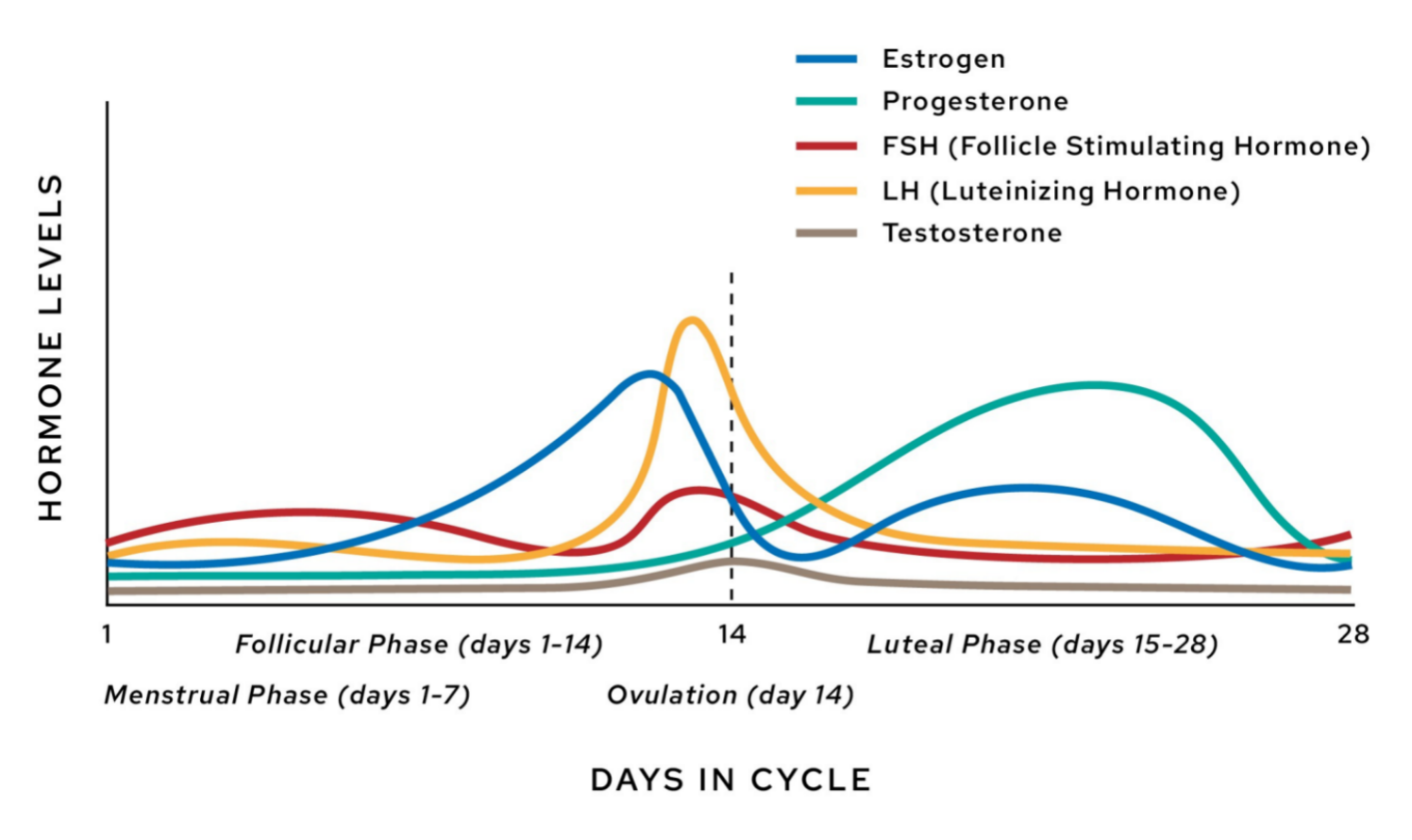Do you notice intense cravings for sweets, salty snacks, or carb-heavy comfort foods in the days leading up to your period? You’re not alone. These cravings are your body’s way of signaling specific nutritional and hormonal shifts happening during the luteal phase of your cycle.
In today’s post, we’ll discuss why this happens—and share strategies to tackle those unwanted cravings.
Why Do Cravings Spike?
During the luteal phase, estrogen levels drop while progesterone rises, which can increase your appetite and energy needs. Your body naturally seeks more calories to support the metabolic demands of this phase.

During this time, you also may experience a serotonin drop. Lower serotonin levels can lead to mood swings and trigger cravings for quick fixes like sugar and carbs, as they temporarily boost serotonin production.
Managing serotonin levels during the luteal phase can reduce cravings, improve mood, and make it easier to stay on track with fitness and nutrition goals. By focusing on nutrient-dense foods, regular exercise, and stress reduction, you can mitigate the effects of serotonin drops and feel more balanced throughout your cycle.
Actionable Ways to Manage Cravings
1. Protein is Your Secret Weapon
- Incorporate 20-30g of protein at each meal to help balance hunger hormones.
- Example Meal: Grilled chicken or tofu on a quinoa salad with a tahini dressing is a perfect luteal-phase (or anytime!) lunch.
2. Eat Foods High in Tryptophan
Tryptophan is an amino acid that serves as a building block for serotonin. Pairing tryptophan-rich foods with carbohydrates helps the amino acid cross the blood-brain barrier more efficiently.
- Best Sources: Turkey, chicken, eggs, cheese, nuts, seeds, tofu, and salmon.
- Meal Idea: A slice of whole-grain toast topped with turkey and avocado.
3. Balance Your Blood Sugar
- Focus on complex carbohydrates like quinoa, brown rice, and oats versus simple carbs.
- Always include protein and healthy fats in meals to help stabilize blood sugar.
- Eating smaller, more frequent meals can help prevent drastic dips in blood sugar. Try to eat every 3-4 hours to maintain consistent energy levels.
4. Boost Omega-3 Intake
- Best Sources: Fatty fish (salmon, mackerel), chia seeds, flaxseeds, and walnuts.
- Tip: Aim for at least two servings of fatty fish per week or supplement with DHA/EPA daily.
5. Incorporate Magnesium
Magnesium supports serotonin synthesis and may alleviate mood swings and cravings during the luteal phase. Magnesium may also help reduce other PMS symptoms.
- Best Sources: Dark chocolate (70% cacao or higher), spinach and other leafy greens, almonds, whole grains, and bananas.
- Tip: Supplementing magnesium glycinate daily is often effective for PMS symptoms.
6. Exercise Regularly
Physical activity stimulates serotonin release and can be a good stress reliever.
7. Practice Stress-Reduction Techniques
Meditation, yoga, and deep-breathing exercises can help regulate mood and reduce cravings.
8. Optimize Vitamin B6 and D Levels
- Vitamin B6: A cofactor in serotonin production and supports energy levels.
- Best Sources of B6: Chicken, fish, potatoes, and fortified cereals.
- Vitamin D: Boosts serotonin synthesis in the brain.
- Best Sources of Vitamin D: Sun exposure, fatty fish, and supplementation.
9. Stay Hydrated
- Aim for at least ½ of your body weight in ounces of water daily.
- Consider adding electrolyte-rich options like coconut water if you’re active.
PRO TIP…
Prepare for cravings by having healthy options on hand. Homemade energy balls or Greek yogurt with fruit can be quick, satisfying options when cravings strike.
By understanding your body's signals and being prepared, you can handle cravings without derailing your nutrition goals—and support your body through every phase of your cycle.


.jpg)
.png)
.jpg)
